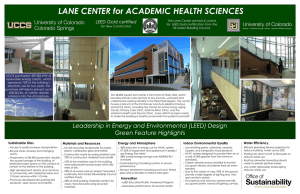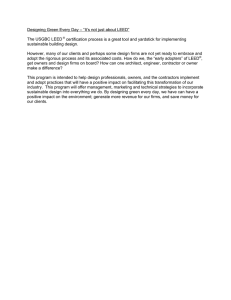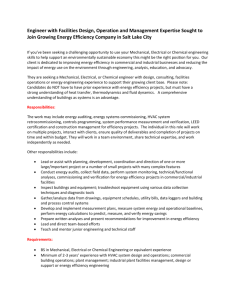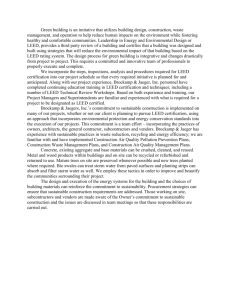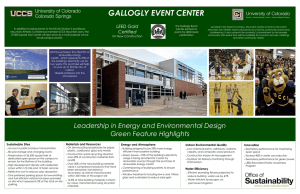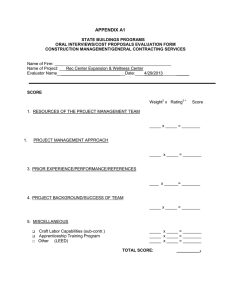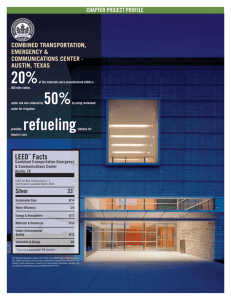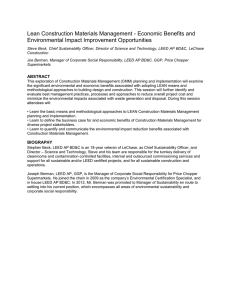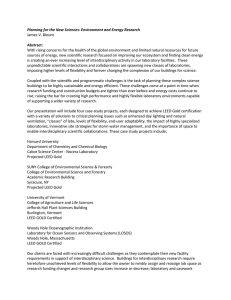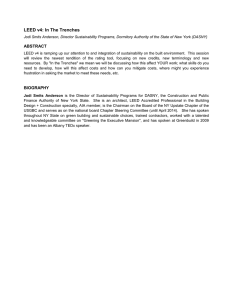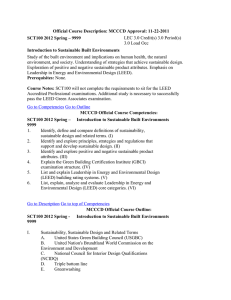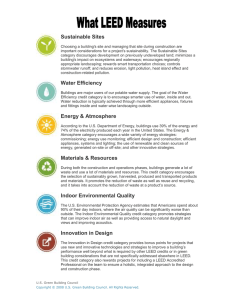ACADEMIC OFFICE BUILDING LEED Gold certified
advertisement
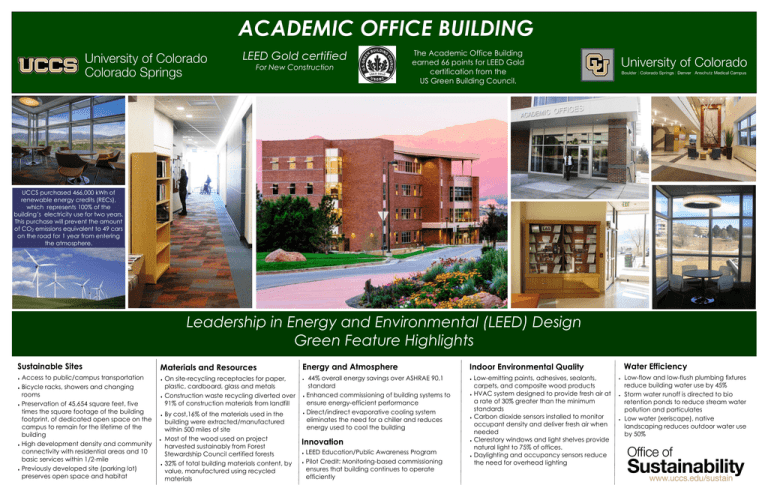
ACADEMIC OFFICE BUILDING LEED Gold certified For New Construction The Academic Office Building earned 66 points for LEED Gold certification from the US Green Building Council. UCCS purchased 466,000 kWh of renewable energy credits (RECs), which represents 100% of the building’s electricity use for two years. This purchase will prevent the amount of CO2 emissions equivalent to 49 cars on the road for 1 year from entering the atmosphere. Leadership in Energy and Environmental (LEED) Design Green Feature Highlights Sustainable Sites Access to public/campus transportation Bicycle racks, showers and changing rooms Preservation of 45,654 square feet, five times the square footage of the building footprint, of dedicated open space on the campus to remain for the lifetime of the building High development density and community connectivity with residential areas and 10 basic services within 1/2-mile Previously developed site (parking lot) preserves open space and habitat Materials and Resources On site-recycling receptacles for paper, plastic, cardboard, glass and metals Construction waste recycling diverted over 91% of construction materials from landfill By cost,16% of the materials used in the building were extracted/manufactured within 500 miles of site Most of the wood used on project harvested sustainably from Forest Stewardship Council certified forests 32% of total building materials content, by value, manufactured using recycled materials Energy and Atmosphere 44% overall energy savings over ASHRAE 90.1 standard Enhanced commissioning of building systems to ensure energy-efficient performance Direct/indirect evaporative cooling system eliminates the need for a chiller and reduces energy used to cool the building Innovation LEED Education/Public Awareness Program Pilot Credit: Monitoring-based commissioning ensures that building continues to operate efficiently Water Efficiency Indoor Environmental Quality Low-emitting paints, adhesives, sealants, carpets, and composite wood products HVAC system designed to provide fresh air at a rate of 30% greater than the minimum standards Carbon dioxide sensors installed to monitor occupant density and deliver fresh air when needed Clerestory windows and light shelves provide natural light to 75% of offices. Daylighting and occupancy sensors reduce the need for overhead lighting Low-flow and low-flush plumbing fixtures reduce building water use by 45% Storm water runoff is directed to bio retention ponds to reduce stream water pollution and particulates Low water (xeriscape), native landscaping reduces outdoor water use by 50%
